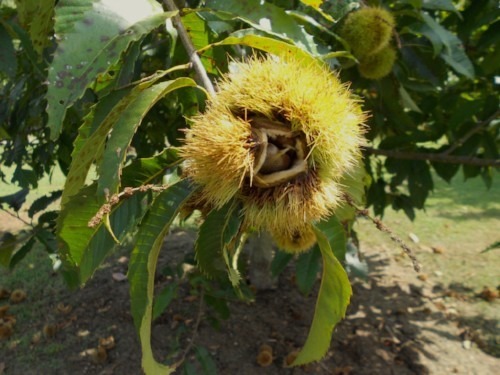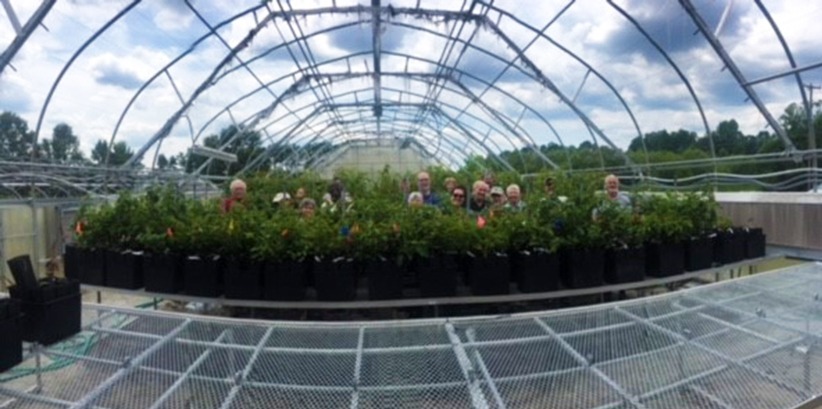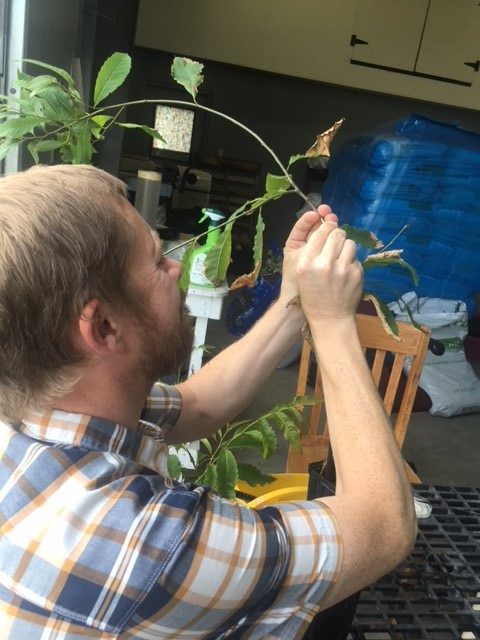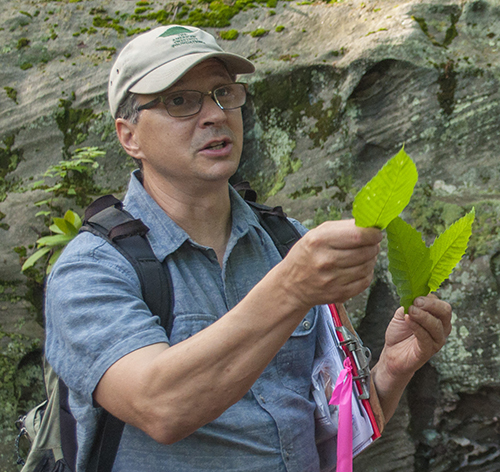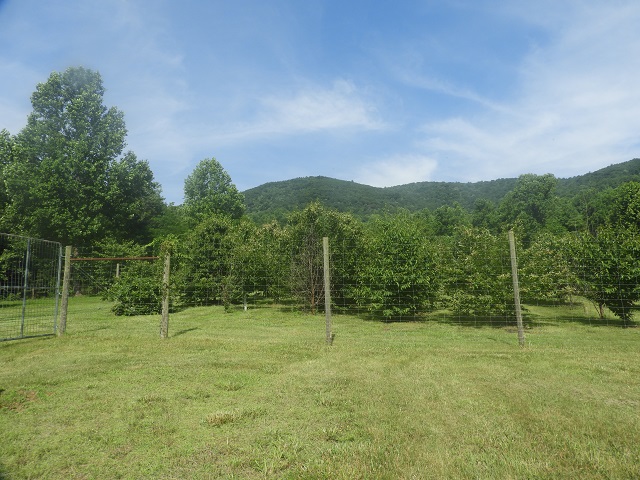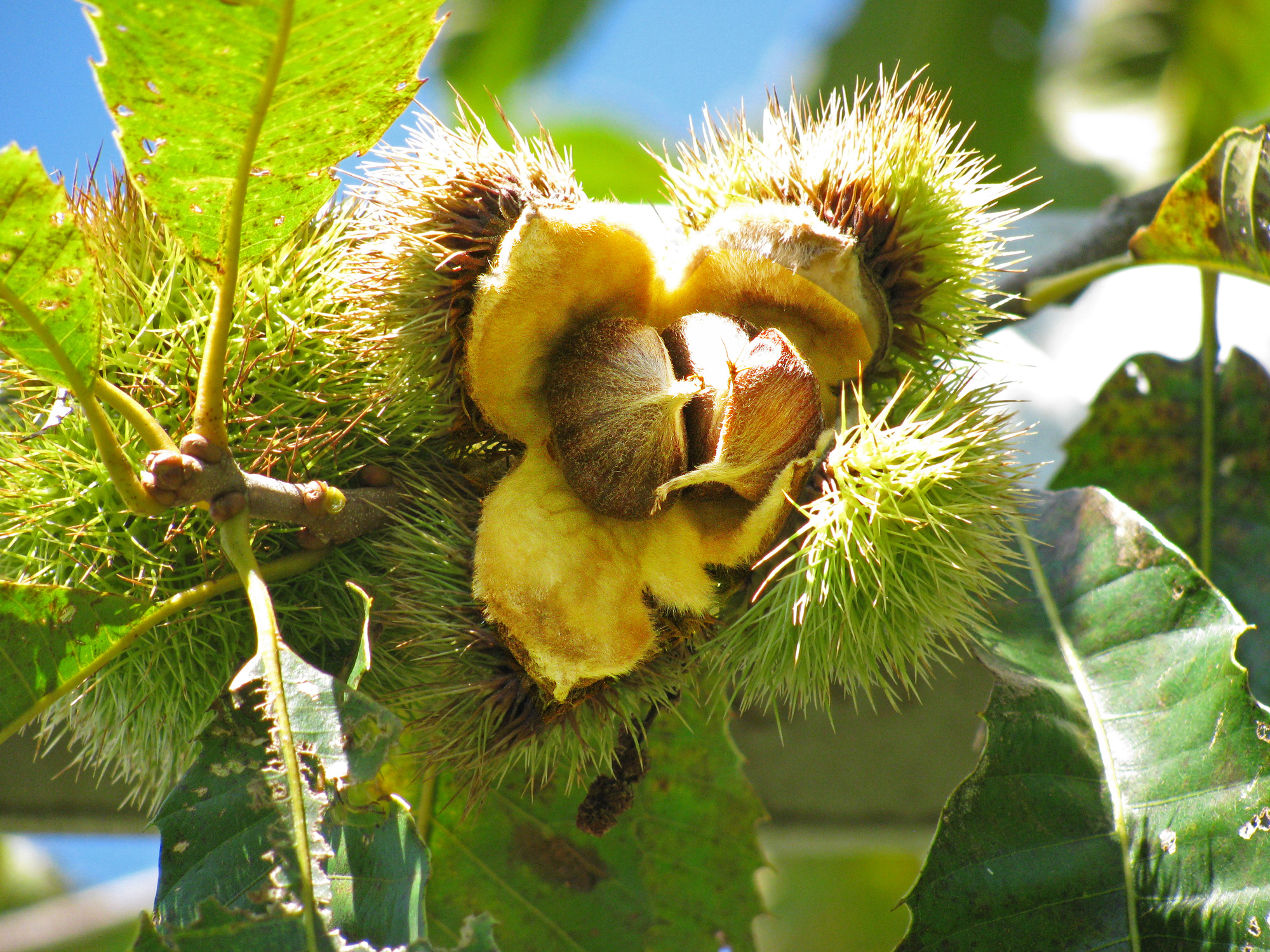Virginia News
Bur Collection Time: Volunteers Needed!
We’re looking for volunteer chestnut lovers to help bring in this year’s nuts. If you haven't harvested before, here's all it entails. Someone climbs up the ladder and pushes the burs off. People on the ground chase down the burs and put them in bags. Except at...
Fall Newsletter Published!
The Fall 2018 issue of the Virginia Chapter of TACF's newsletter, The Bur, is now available for downloading. You can get a pdf copy of this and all issues of The Bur here.
Successful Day Inoculating at New Kent
We had a great day on July 20th at the New Kent Forestry Center! It was a gorgeous day and we stayed cool enough in the shade of the ops building. With 24 folks working, we were able to inoculate about 1400 chestnut seedlings in under 5 hours. That’s pretty...
Small Stem Assay at Providence Forge
On July 20, 2018, small stem assay was conducted at Providence Forge, Virginia (east of Richmond). The seedlings are being used in progeny testing. The seedlings are about 18 months old and were being inoculated with the blight. They were grown in a greenhouse at the...
Inoculation at Fried Orchard
On June 14, a group of volunteers inoculated about 140 trees in the Fried Orchard. The volunteers were Ned Yost, Tom Wild, Meg Sewell and Warren Laws. Regional Coordinator Tom Saielli and our intern Katrina Somers participated as well.
Spring 2018 Newsletter Now Available
The Spring 2018 issue of the Virginia Chapter's newsletter, The Bur, is now available on line. Click here to read the latest issue, which includes stories on progeny testing, the backcross breeding program and chainsaw safety practices and training, along with a...

